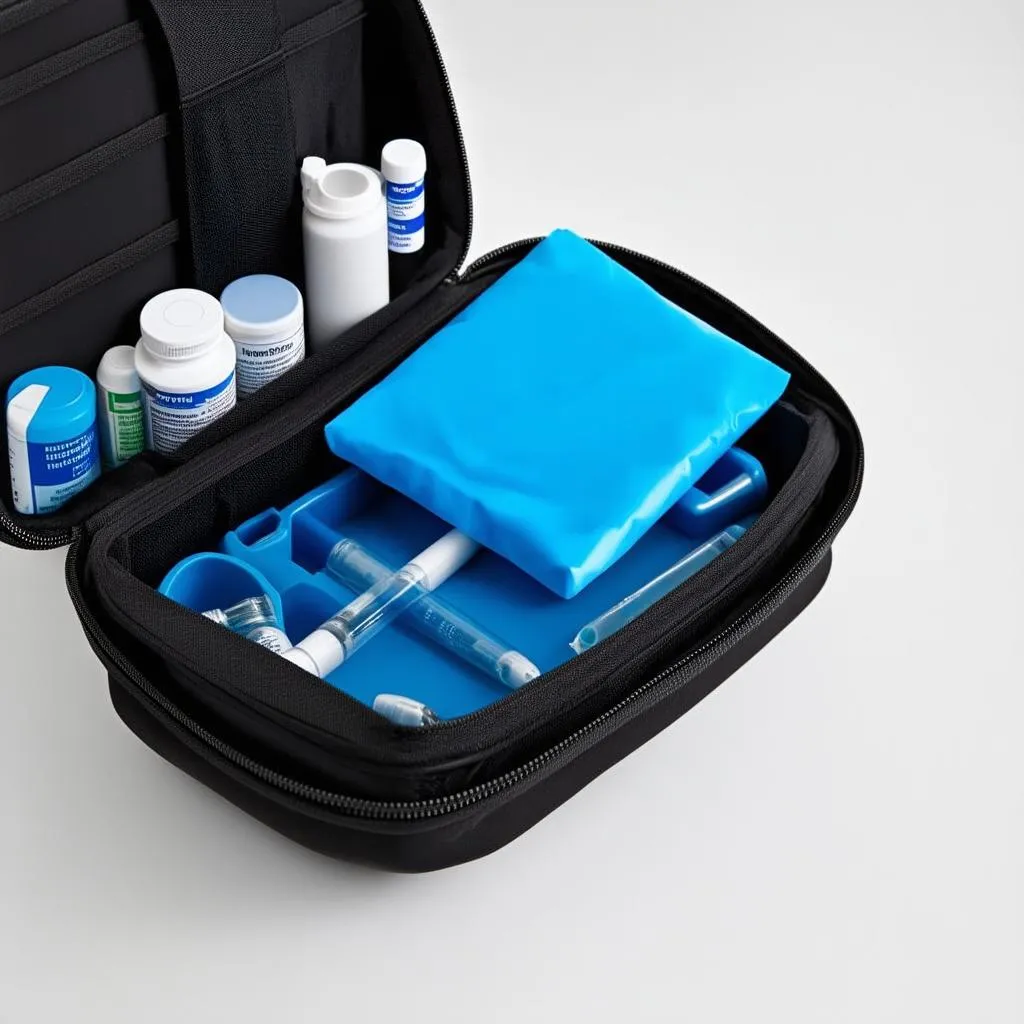Picture this: You’re finally off on that dream vacation to Paris, strolling along the Seine, baguette in hand, only to realize you’ve forgotten something crucial – a way to keep your insulin cool. Traveling with insulin can be stressful, especially in the age of strict airport security and unpredictable weather. But don’t worry, we’ve got you covered! This comprehensive guide will answer all your questions about using gel packs for traveling with insulin, ensuring a smooth and worry-free trip.
Gel Packs and Insulin: A Match Made for Travel?
Gel packs are a popular choice for keeping things cool on the go, but are they good for traveling with insulin? The short answer is: yes, but with a few caveats.
Why Gel Packs Are Great for Insulin Travel:
- Reusable and Convenient: Unlike ice packs that melt and create a mess, gel packs can be refrozen and reused multiple times, making them an eco-friendly and convenient option for travel.
- TSA Approved: Most gel packs are TSA approved for carry-on luggage, provided they are frozen solid when presented at security checkpoints. Just make sure to double-check the TSA guidelines before your trip to avoid any last-minute surprises.
- Variety of Sizes: Gel packs come in different shapes and sizes, allowing you to choose the perfect fit for your insulin travel case.
Things to Consider When Using Gel Packs:
- Freezing Time: Gel packs generally take longer to freeze than traditional ice packs, so plan and ensure they are completely frozen before your departure.
- Temperature Fluctuations: While gel packs do a good job of keeping things cool, they may not maintain the precise temperature required for insulin storage over extended periods, especially in hot climates.
- Condensation: As the gel pack thaws, condensation may form on its surface. It’s essential to use a waterproof insulin travel case to prevent any water damage.
Choosing the Right Gel Pack for Your Insulin
Not all gel packs are created equal, especially when it comes to traveling with insulin. Here are a few factors to consider when choosing the best gel pack:
1. Size and Shape: Opt for a gel pack that fits snugly in your insulin travel case without taking up too much space. Slim, contoured gel packs are ideal for maximizing space.
2. Freezing Temperature: Choose gel packs that freeze at a lower temperature (around -18°C or 0°F) to ensure your insulin stays cool for longer.
3. Durability: Invest in a high-quality gel pack made from durable materials that can withstand the rigors of travel.
4. TSA Approval: Double-check that the gel packs you choose are TSA approved for carry-on luggage.
 Insulin travel case with gel pack
Insulin travel case with gel pack
Tips for Traveling with Insulin and Gel Packs
Here are some expert tips for a stress-free trip:
- Invest in a quality insulin travel case: A good insulin travel case is crucial for maintaining the right temperature and protecting your medication. Look for insulated cases specifically designed for insulin storage.
- Pre-chill your case: Before packing your insulin, place the empty case with the frozen gel packs inside a refrigerator or freezer for several hours to pre-chill it. This will help maintain a cooler temperature for longer.
- Pack strategically: Place your insulin travel case in the center of your carry-on luggage, surrounded by clothing or other soft items for insulation. Avoid packing it near the edges of your bag where it may be subject to more extreme temperatures.
- Bring a doctor’s note: Carry a letter from your doctor stating that you need to travel with insulin and any other necessary medical supplies. This can help expedite the security process and prevent any misunderstandings.
- Check airline regulations: While most airlines are accommodating to passengers traveling with medical supplies, it’s always a good idea to check their specific regulations regarding insulin and gel packs before you fly.
FAQs:
Can I bring gel packs on a plane?
Yes, gel packs are generally allowed in carry-on luggage if they are completely frozen solid when presented at the security checkpoint. However, it’s essential to check with the TSA and your specific airline for their most up-to-date regulations.
How long will a gel pack keep insulin cold?
The duration for which a gel pack can keep insulin cold depends on various factors like the size and type of gel pack, the ambient temperature, and the insulation of your travel case. On average, a frozen gel pack can keep insulin cool for up to 8-12 hours in a well-insulated travel case.
Can I use a gel pack that’s not entirely frozen?
It’s best to use a gel pack that’s completely frozen to ensure optimal cooling for your insulin. Partially frozen gel packs may not be as effective in maintaining the required temperature, especially during longer trips.
What happens if my gel pack thaws during travel?
If your gel pack thaws during your travels, try to find a way to refreeze it as soon as possible. You can ask hotel staff for access to a freezer or use a portable cooler bag with fresh ice or frozen gel packs.
Travel Smart, Travel Prepared
Traveling with insulin doesn’t have to be a daunting task. By following these simple tips and choosing the right gel packs, you can ensure your insulin stays safe and effective throughout your journey. Remember to plan ahead, pack strategically, and always prioritize your health and well-being while on the go.
 Couple with suitcases at airport
Couple with suitcases at airport
For more travel tips and resources, be sure to check out our other informative articles on travelcar.edu.vn. Safe travels!